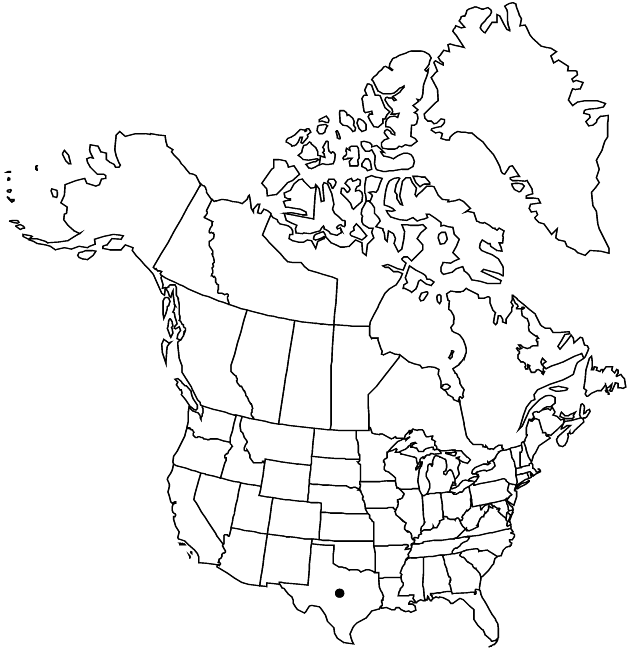Difference between revisions of "Aphanostephus skirrhobasis var. kidderi"
Phytologia 56: 94. 1984.
Basionym: Aphanostephus kidderi S. F. Blake Contr. Gray Herb. 53: 23. 1918
Treatment appears in FNA Volume 20. Treatment on page 352.
FNA>Volume Importer |
FNA>Volume Importer |
||
| Line 7: | Line 7: | ||
|year=1984 | |year=1984 | ||
}} | }} | ||
| − | |basionyms={{Treatment/ID/ | + | |basionyms={{Treatment/ID/Basionym |
|name=Aphanostephus kidderi | |name=Aphanostephus kidderi | ||
|authority=S. F. Blake | |authority=S. F. Blake | ||
| + | |publication_title=Contr. Gray Herb. | ||
| + | |publication_place=53: 23. 1918 | ||
}} | }} | ||
|synonyms= | |synonyms= | ||
| Line 26: | Line 28: | ||
|elevation=0–50 m | |elevation=0–50 m | ||
|distribution=Tex.;Mexico (Tamaulipas). | |distribution=Tex.;Mexico (Tamaulipas). | ||
| − | |discussion=<p>Apparent intergrades between <i></i>var.<i> kidderi</i> and <i></i>var.<i> skirrhobasis</i> are relatively common. There is a greater tendency in <i>Aphanostephus skirrhobasis</i> for leaves to be lobed or pinnatifid over the whole stem than in the other species.</p> | + | |discussion=<p>Apparent intergrades between <i></i></i>var.<i><i> kidderi</i> and <i></i></i>var.<i><i> skirrhobasis</i> are relatively common. There is a greater tendency in <i>Aphanostephus skirrhobasis</i> for leaves to be lobed or pinnatifid over the whole stem than in the other species.</p> |
|tables= | |tables= | ||
|references= | |references= | ||
| Line 50: | Line 52: | ||
|publication year=1984 | |publication year=1984 | ||
|special status= | |special status= | ||
| − | |source xml=https://jpend@bitbucket.org/aafc-mbb/fna-data-curation.git/src/ | + | |source xml=https://jpend@bitbucket.org/aafc-mbb/fna-data-curation.git/src/f6b125a955440c0872999024f038d74684f65921/coarse_grained_fna_xml/V19-20-21/V20_809.xml |
|tribe=Asteraceae tribe Astereae | |tribe=Asteraceae tribe Astereae | ||
|genus=Aphanostephus | |genus=Aphanostephus | ||
Revision as of 18:44, 24 September 2019
Plants (10–)15–35 cm. Stems erect to decumbent, hirsuto-pilose and/or puberulent, hairs (0.2–)0.5–1.2 mm. Leaves not strongly thickened or felty gray-hairy. Ray florets 1–9–40. Pappi of acute or awn-tipped or setiform scales 0.4–2 mm. 2n = 6.
Phenology: Flowering Mar–Jun(–Aug).
Habitat: Sandy or gravelly soils, often in matorral and scrublands
Elevation: 0–50 m
Distribution

Tex., Mexico (Tamaulipas).
Discussion
Apparent intergrades between var. kidderi and var. skirrhobasis are relatively common. There is a greater tendency in Aphanostephus skirrhobasis for leaves to be lobed or pinnatifid over the whole stem than in the other species.
Selected References
None.
Lower Taxa
None.